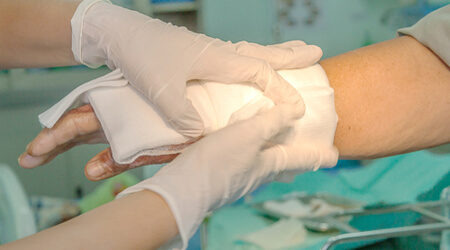
Anyone who has suffered a serious burn injury can tell you how life-altering it can be. Besides the pain and medical treatment disrupting your life, it can take a serious toll on your emotional and financial well-being, too.
Burn injury victims shouldn’t have to shoulder their losses alone. If you or someone dear to you has suffered severe burns because of someone else’s carelessness or negligence, you can seek financial compensation. You may be entitled to recover costs for your medical bills, loss of income, pain and suffering, and other losses.
The compassionate attorneys with Joye Law Firm understand what you’re going through and want to help you recover the full compensation you need to rebuild your life. We have been fighting for injured clients in South Carolina since 1968. If you are facing a difficult recovery, let us help you, too. Just Call Joye at 888-324-3100 for a free consultation with a dedicated burn injury lawyer in South Carolina.
Burn Injury Classifications
A burn’s severity depends on how it occurs and the extent of the damage it does to the skin and underlying tissue. Some burns are superficial, causing minor damage to the outermost layer of the skin, these wounds typically heal quickly. However, more severe burns can damage the nerves, muscles, and tissue below the skin. These serious injuries require more significant treatment, such as surgery and skin grafts. Victims of severe burns may spend months hospitalized, fighting for their lives.
The primary classifications of burn injuries are:
- First-degree burn is a superficial injury. Minimal damage to the epidermis, your outer skin layer, leads to inflammation, swelling, and redness. While extremely painful, scarring is unlikely as the wound heals.
- Second-degree burn referred to medically as a partial thickness burn, causes damage to the epidermis and the dermis, a deeper skin layer. The injury site is often sore and appears red. Blisters might develop at the injury site, scabbing over during healing. This type of burn can also cause skin pigmentation changes and scarring.
- Third-degree burn medically called a full-thickness burn, damages both the epidermis and dermis, as well as subcutaneous tissue. These severe injuries can be fatal.
- Fourth-degree burns damages both skin layers and deeper tissue, possibly destroying muscle and bone. While rarely survivable, extensive damage can destroy the nerves and dull the sensation of pain.
Types of Burn Injuries
Aside from being classified by degree, injuries are also typed by the source of the burn.
The most common types of burn injuries include:
- Thermal – A thermal burn results from exposure to a hot object, heat source, or flame. Touching hot items or liquids or standing near an open flame can lead to thermal burn injuries.
- Electrical – An electrical burn occurs when an electrical current passes through the body, damaging skin, tissue, nerves, and internal organs.
- Radiation – Exposure to ultraviolet rays and other forms of radiation can also burn tissue. Sunburn is the most common type of radiation burn.
- Chemical – A chemical burn involves physical contact with caustic chemicals such as bleach that can burn skin immediately and damage underlying tissue with prolonged contact.
Common Causes of Burn Injuries
Some of the most common causes of burn injuries include:
- Motor vehicle accidents
- Live electrical wires
- Malfunctioning machinery or equipment
- Nursing home abuse or neglect
- A defective product, such as a crockpot or air fryer
- Building fire
- Explosions
- Electric shock from exposed faulty wiring
- Exposure to flammable or corrosive substances




